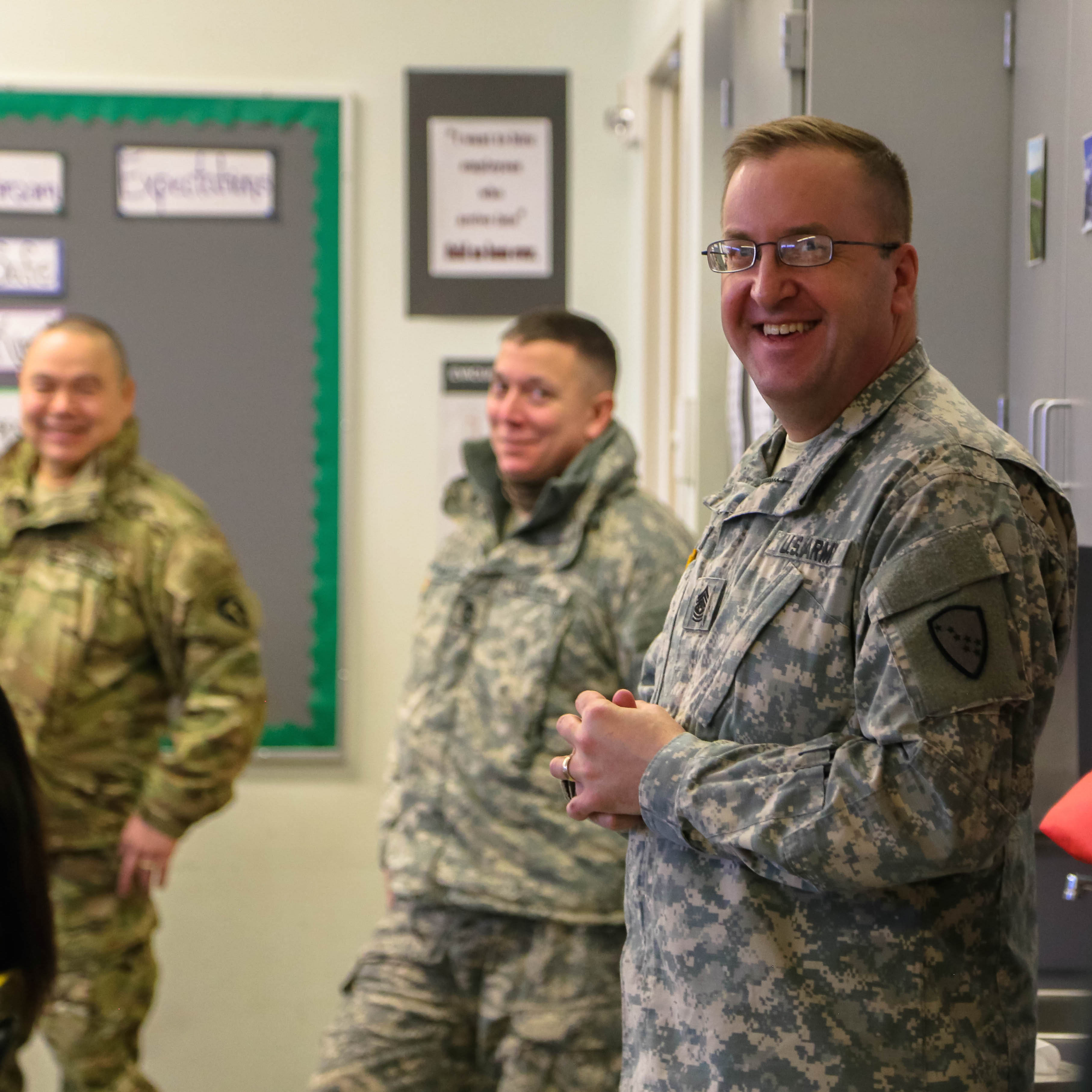Most villages in the Yukon-Kuskokwim Delta region have old National Guard armories. There was a time when they were all manned by guardsmen from the community, but now they’re mostly vacant. A statewide effort is underway to strengthen the dwindling guard presence in rural Alaska villages.
The decline of the National Guard is an issue that caught the attention of the Association of Village Council Presidents. AVCP President Myron Naneng noted the loss of the guard presence in Native villages at the Alaska Federation of Natives annual convention in October. He says he first noticed the need during a disaster a couple of years ago.
“There was a flood at Kotlik and there was only one National Guardsman that was there in the village, and he didn’t have a lot of resources to help the rest of the community to help deal with what they were going through at the village level,” said Naneng.
Naneng says in the past guardsmen would serve as community leaders and bring needed income into impoverished villages.
According to the Alaska Army National Guard, there used to be about 600 active duty guardsmen serving the YK Delta region in the 1980s. Today there are fewer than 40. A new effort is hoping to turn the tide.

The Rural Guard Initiative is led by former Bethel resident Command Sgt. Maj. Richard Hildreth. He was assigned by the Adjutant General of Alaska, Gen. Laurie Hummel, to lead the initiative.
“It was her desire to try to get more guard participation out in some of these rural and remote communities. The Rural Initiative is to attempt to try to regain some of that participation out in these communities,” said Hildreth.
The initiative follows the recommendations of the Rural Guard Commission that was created by Governor Walker and Lt. Gov. Mallott to learn more about the National Guard presence in rural Alaska and to find effective ways to bring their numbers back up. The report cites the need to monitor 54,000 miles of Alaska coast and the benefits of having guardsmen present in communities to provide immediate support when needed, like in search and rescue operations.
Following the initiative, Hildreth says the National Guard leadership plans to get more recruits in the villages by making more information and recruiters available. But he says it’s up to locals to increase the numbers.
“That means people 17 through 35 need to recognize the guard is a good option and they need to come forward and start asking to participate. And we need the influence from the leaders, the tribal leaders, the family members, the elders, the mothers and fathers to recognize that this is a good program and it’s OK for your children to come serve with us,” said Hildreth.
The effort is separate from a move by Walker to create a new Scout Battalion. Walker is proposing the Scout Battalion, in part, as a response to the decline in National Guard activity in rural villages.
Hildreth says even if the Alaska Scout Battalion takes off there will still be a place for the National Guard. Among other things, the National Guard can offer a variety of training, income and secondary education assistance.
Bethel, Hooper Bay, Kipnuk, Quinhagak and Kwethluk have recognized National Guard armories or detachments. Hildreth says he hopes enough people around those villages will enlist with the Guard so they can form squads.
Today the Alaska National Guard has two missions: the state mission to protect the infrastructure in the state and the federal mission to deploy with the Army when needed.
Hildreth says the Alaska Army National Guard was formed in the 1940s along with the Alaska Territorial Guard. Around that time, World War II was looming and after a Japanese invasion in the Aleutian Islands, military officials realized the need to form a defense force in the area.
“(I think it was 1943) when Muktuk Marston started running up and down the coast trying to solicit for membership. I think … virtually every able-bodied person participated as a traditional guardsman, as an ATG,” said Hildreth.
The Alaska Territorial Guard was a volunteer force with over 6,000 members, mostly Alaska Natives. The guard hopes they can now entice a new generation to pick up the tradition.
